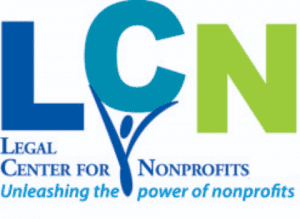This is often one of the first questions I am asked by clients who are forming nonprofit organizations. I usually begin my response with the typical lawyer answer, “It depends.”
The board of directors (board members are properly called “directors”) by law holds all the authority of the nonprofit corporation. Individual directors have a fiduciary relationship with the nonprofit—they are bound at all times to uphold the best interests of the nonprofit. The board must oversee all the activities of the nonprofit, develop the nonprofit’s strategic direction, set policy, and generally lead the organization as it carries out its mission. This is a lot of responsibility.
Independence of directors is essential—independence of thought, as well as independence in the sense of freedom from direct or indirect conflicts of interest. For this reason, best practice requires all directors to be independent of each other—that is, unrelated as to family or business relationships.
Initially, to form the nonprofit, three directors are sufficient. In fact, in Massachusetts, one person is sufficient to form a nonprofit corporation, but this is not recommended for a nonprofit that plans to seek tax-exempt status. But to actually move the nonprofit assertively into its mission, more will be required. Moreover, if the first three directors are the founder plus a colleague and a family member (often the case at initial start-up) for example, additional directors should be added to offset these relationships. To concentrate the power of the nonprofit in one or two or three individuals who, because of their relationships, effectively constitute a voting block, subjects the nonprofit too strongly to their private interests. Charities, as the IRS has pointed out, must serve a public interest—not a private interest.
The next consideration is the size and scope of the nonprofit. A new nonprofit with one primary activity and no staff can manage satisfactorily with five directors, for example. A large, established nonprofit with staff and a range of programs, strong fundraising and multiple funding streams, and a board that is fully engaged in strategic planning, will need many more board members—perhaps 12-15 at least, possibly more.
Another key consideration is the need of the board for a variety of skills, experience, and contacts, and for a generally diverse make-up. Boards should reflect a range of skillsets, experience, and preferably multiple and different networks of contacts that can be used to the benefit of the nonprofit. For some nonprofits, a board that is representative of its community is crucial. Does every board need directors who are accountants and lawyers? No. But some financial savvy is essential, along with analytical ability, networks of contacts, and subject matter expertise. If the nonprofit’s board is only three individuals, is all that likely to be covered?
Boards of directors are not static. A board is never finished, set, complete. Boards are more like living organisms—they are born at the time of corporate formation, they grow and develop; they change over time. Indeed, a nonprofit whose board is unchanged many years after formation is likely stagnant, stuck, unable to move forward.
So how many board members does a nonprofit need? The short answer is, “Enough to get the job done.”

